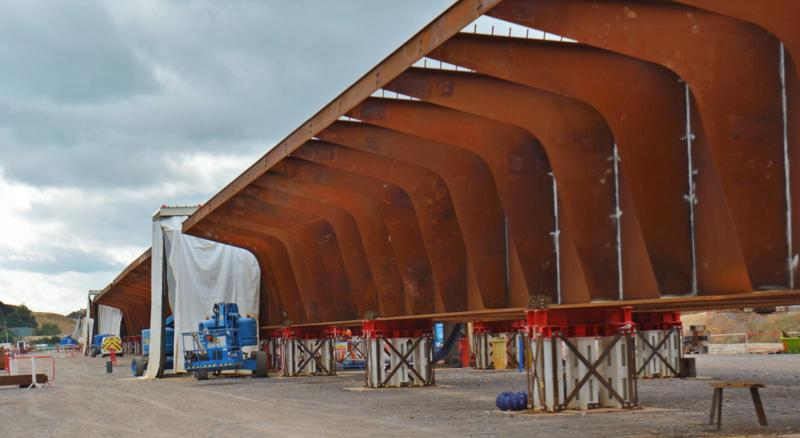
For the past nine months, the EKFB Joint Venture (Eiffage, Kier, Ferrovial Construction and BAM Nuttall) which is responsible for constructing the central section of HS2 has been ‘pushing’ uphill an increasingly heavy bridge deck, just to the south of Wendover in Buckinghamshire.

For the past nine months, the EKFB Joint Venture (Eiffage, Kier, Ferrovial Construction and BAM Nuttall) which is responsible for constructing the central section of HS2 has been ‘pushing’ uphill an increasingly heavy bridge deck, just to the south of Wendover in Buckinghamshire.
The 450-metre-long deck for the Wendover Dean viaduct, which is now in position, initially weighed 590 tonnes during the first bridge ‘slide’, which took place in January this year. But by the time the full deck had been assembled prior to the final slide, the structure weighed 3,700 tonnes.
The bridge slide, which is sometimes referred to as a ‘push launch’, involves ‘pushing’ (or more accurately ‘pulling’) the deck over pre-built concrete piers.
It was achieved using a winch and pulley system situated by the northern abutment. And to aid the slide, the bridge was supported on pairs of temporary steel bearings atop each of the concrete piers.
During the slide, workers manually inserted pads covered in Polytetrafluoroethylene (PTFE) between the bearings and bridge deck as it moved forward. This dramatically reduced the friction generated and made the sliding process much easier.
Before each slide, sections of deck were assembled from 23-metre to 25-metre-long weathering steel beams. These beams were manufactured in France and transported to Wendover by ferry and then road. It was this journey which ultimately determined the maximum length of the individual beams.
Owing to the limited space available on site close to the northern abutment, the deck was assembled in sections ranging from 90 metres to 180 metres in length, which were then slid south after assembly was complete.
The northern abutment is approximately 1.8 metres lower than the southern abutment, which meant the deck had to be slid uphill. However, rather than making the slide more difficult, this actually aided the process as it helped to maintain control of the deck.
Now that the deck is in position, the process of removing the temporary bearings is under way. This involves lowering sections of the deck by 60cm (in 20cm increments) until the lowered section rests on permanent bearings.
Once the entire deck has been lowered onto the permanent bearings, the concrete parapets will be constructed. To do this, EKFB will use a ‘form travel’ - a movable mould into which concrete is poured. Then, once the concrete has cured, the mould is moved along to construct the next parapet section.
The construction of one double composite viaduct on this scale alone would be an impressive feat. But EKFB is having to construct two viaducts within a relatively short distance.
To further complicate matters, the Small Dean viaduct located just to the north of the Wendover Dean viaduct will have to cross the busy A413 and the London-Aylesbury line.
To limit disruption to the busy main road and railway, EKFB has opted to slide the deck for this viaduct in one go. This process has been made possible because there is more space available within which to assemble the entire 345-metre-long deck.
All of the beam sections are now in place, with the process of welding the joints taking place throughout August. Precast concrete panels, similar to those used on the Wendover Dean viaduct, will be installed once welding is complete.
However, unlike the Wendover viaduct, all of the panels will be installed before the slide takes place. It is for this reason that despite being shorter, the deck will weigh approximately 4,300 tonnes during the launch.
EKFB is aiming to launch the deck in early 2025. This will involve a single slide, lasting around five days.
The A413 road will have to close for one day during the start of the launch. This is because a red guide, which is used to ensure the tip of the deck meets the temporary bearings, will have to cross the road. Once this guide has crossed the road (taking approximately one day), the road will reopen and remain open during the remainder of the slide.
There will be no risk to motorists during the slide. However, it is thought that the sight of a large red frame moving slowly above the road may cause a distraction to motorists, which is why the road will close for the day.
Network Rail is also reluctant for Chiltern Railways to operate trains during an active bridge slide, for the same reason. Therefore, the railway will also remain closed throughout the bridge launch.
Once the deck has been slid into place, and the precast concrete parapets installed, the parapets will be permanently tied to the top panels with a layer of poured concrete.
The concrete panels at the base will also be covered with a layer of concrete that will permanently tie the panels to the steel beams and further stiffen the structure.
The A413 will remain open during the concrete pour, as a watertight seal will be formed between the concrete panels and steel beams, meaning there is no risk of concrete leaking onto the road below.
The use of precast concrete parapets is one of the reasons that the Small Dean viaduct deck looks markedly different from the Wendover structure, with steel ‘fins’ protruding from the main deck.
These steel fins, as well as providing reinforcement, were intentionally chosen as they produce a look which is evocative of traditional plate girder bridges.
A lot of thought was put into the design of the Small Dean viaduct, as it will be a highly visible structure seen by thousands of motorists each day.
That’s not to say less thought was put into the Wendover Dean viaduct, but Wendover will not be as visible to the public. Instead, it will only be visible to a small number of local residents, farmers and walkers, and thus was designed to have more of a sleek appearance.
Although there is sufficient space close to the southern abutment to assemble the whole deck, the site close to the road and railway is particularly constrained, with the road and railway running parallel and only metres apart as they pass Wendover to the west.
The road has therefore had to be realigned during construction of the concrete piers, and will have to be realigned once again before the deck is slid into place.
The road will also have to be lowered during the realignment process, to provide sufficient clearance for HGVs, as the bridge deck will be relatively low to the ground.
Although several joint ventures are responsible for constructing HS2, there has been a noticeable drive towards using as much off-site manufacturing as possible. This does create logistical challenges, but it ultimately means that high standards - and in some cases very high-quality finishes - can be achieved.
The steel beams for both the Wendover and Small Dean viaducts were manufactured by Eiffage Metal at a specialist facility in France, while the ‘shells’ for the concrete piers were constructed in Northern Ireland.
The finish of the shells is exceptional - they have a particularly smooth texture for something constructed out of concrete. Despite being made from reinforced concrete, the shells were not designed to be load-bearing and instead have been used almost like moulds into which concrete was poured.
The piers were formed from three shells, two lower sections which were lifted over pre-placed steel rebar cages, and a 45-tonne upper hammerhead. This section was first lifted onto the lower sections, after which a precision pre-assembled rebar cage was lowered into place. Then, once fully assembled, the whole pier was filled with concrete.
Pouring the concrete for the piers into temporary moulds may have been a cheaper option, but the use of pre-assembly helped to reduce the overall build time, while ensuring a high-quality finish.
Removing the need to construct temporary moulds also provided a safety benefit, as workers spent less time working at height. And with the tallest of the Wendover Dean viaduct piers standing at 14 metres, that was certainly advantageous.
With the Wendover Dean deck now in place and assembly of the Small Dean deck nearing completion, it is hoped that construction of both viaducts will be largely completed by the end of 2025.
After that, the slab track, rails, railway systems and overhead line equipment will be installed in readiness for the first section of HS2 to open between 2029 and 2033.
For a full version of this article with more images, Subscribe today and never miss an issue of RAIL. With a Print + Digital subscription, you’ll get each issue delivered to your door for FREE (UK only). Plus, enjoy an exclusive monthly e-newsletter from the Editor, rewards, discounts and prizes, AND full access to the latest and previous issues via the app.
Login to continue reading
Or register with RAIL to keep up-to-date with the latest news, insight and opinion.


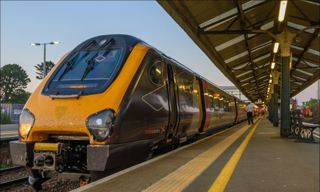
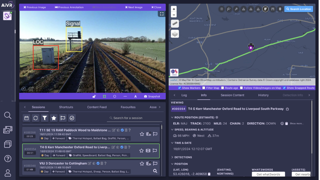
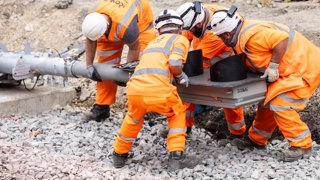
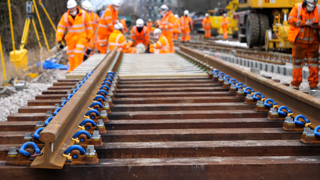










Login to comment
Comments
No comments have been made yet.